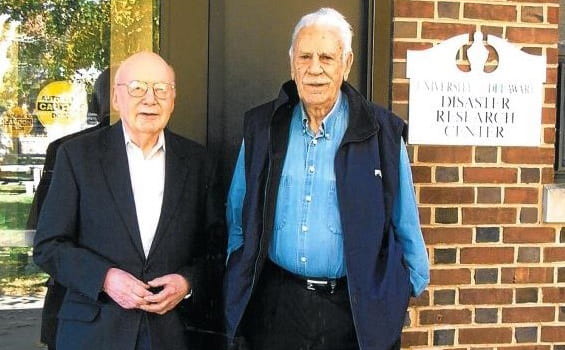For six decades, the Disaster Research Center has used field-tested methods to generate insights on many of the pressing disaster issues of our time. It has prioritized making that information available to anyone who needs it and training the next generation of disaster scholars and practitioners.
Founded in 1963 by sociologists E.L. Quarantelli, Russell Dynes, and Eugene Haas at The Ohio State University, DRC was a pioneer in the field of disaster research. The Center was the first in the world devoted to the social scientific study of disasters. In 1985, the center moved to the University of Delaware, where founders Russell Dynes and E.L. Quarantelli saw strong support for its mission and further expansion of its role as a trusted source of guidance to planners, disaster managers, policy makers, public health specialists and non-government organizations around the world. Much of what is known about the social science aspects disaster comes from DRC or its long lineage of visiting scholars, alumni, and their students.

DRC continues to celebrate success in research, training, and service to the disaster community. While much of DRC’s research has been interdisciplinary throughout its existence, DRC has embarked on a new era as the Center builds on and maintains its foundation in social science while broadening its activities to embrace more explicitly interdisciplinary, multidisciplinary and cross-disciplinary research. All DRC research is intended to yield both basic scientific knowledge on disasters and information that can be applied to develop more effective plans and policies to reduce disaster impacts.
For more information about DRC’s early history, check out this first-hand account written by DRC founder E.L. Quarantelli: DRC Early History.pdf


